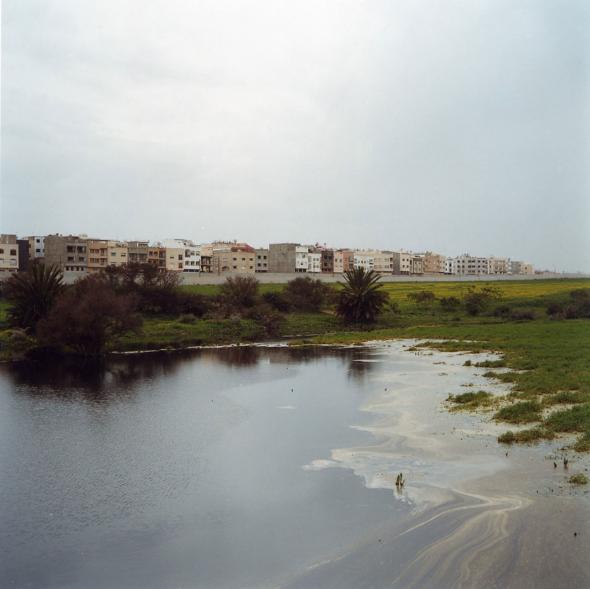Interview with Myriame Morel-Deledalle, exhibition curator of Connectivities
|
The exhibition “Connectivities” unfolds in two sections, one historical and the other contemporary… What is its general aim ? |
|
|
This exhibition addresses the question of cities and their connectivity in the Mediterranean over two radically different time periods. The first section follows a well known historical and geographical sequence through time and space, the Mediterranean of the 16th and 17th centuries, by exploring the connections between six cities (three from the Hapsburg Empire, and three from the Ottoman Empire) which were allied, in opposition, or in a power dynamic of domination. Here the itinerary of the exhibition reflects the geographical space of the Mediterranean : visitors enter in the east by Istanbul, circulate towards Venice and Algiers, before approaching the western part of the Mediterranean, from Genoa to Seville, concluding in Lisbon, the opening to the Atlantic. In the second section, the exhibition presents the cities of the contemporary Mediterranean : two metropolises (Marseille and Casablanca) and two megacities (Istanbul and Cairo). This exploration employs models, videos, films and photographs of contemporary art; while the first section relies on historical objects from a number of French and European museums, as well as pieces from the Mucem’s own collections. |
|
|
The first section leads visitors successively through Istanbul, Algiers, Venice, Genoa, Seville and Lisbon, in the 16th and 17th centuries. Why did you choose these cities and this period ? |
|
|
The Mediterranean of the 16th and 17th centuries emerged as a true historical and geographical tipping point : two great empires coexisting, the Hapsburgs and the Ottomans, and reaching their zeniths; while simultaneously new horizons were appearing making the Mediterranean an open sea, and ushering in the era of globalization. The Hapsburg Empire developed from the West (Americas and Asia) and the Ottoman Empire turned more towards the East (Asia). At the heart of these immense empires, certain cities such as Istanbul, Seville, Venice and Algiers were genuine apexes of power where the exchanges, like the tensions, between the two empires were concentrated, as well as those between these empires and the emerging “new worlds”. This chronological and historical framework is based on the thesis by historian Fernand Braudel, The Mediterranean and the Mediterranean World in the Age of Philip II, and is the starting point of this exhibition.
|
|
|
How is the work of Fernand Braudel (1902 – 1985) still relevant today ? |
|
|
Fernand Braudel was an historian and geographer from the École des Annales who, in the 1930s, with Lucien Febvre and Marc Bloch, initiated a new way of understanding history by privileging the context and the longterm rather than historical events themselves. That is the geographical, physical, historical duration, over the long term, of political and social relationships within societies. Indeed, history is not a succession of events, dates and cannons firing… It is primarily a matter of contexts. What is known as “global history” or “world history” is the logical result of this way of understanding history. Fernand Braudel illustrated this method in 1949, with his thesis The Mediterranean and the Mediterranean World in the Age of Philip II. It is a work of reference, admittedly incomplete – including sources – but whose methodology lays the foundations for a new perspective on history. An exhibition is different from a book, but by using the Braudelian method, it becomes clear that it is possible to articulate the museum’s mission around the connections that maintained these “spaces-worlds”, which were the cities and empires in the 16th and 17th centuries. |
|
|
The second section of the exhibition focuses on contemporary Mediterranean cities, distinguishing between megacities and metropolises… |
|
|
According to the UN, three and a half billion people around the world currently live in cities. This figure will grow to five billion in fifteen years and seven and a half billion by 2050. Consequently, it seems interesting to examine the current urban phenomenon, by focussing on four Mediterranean cities, with very different modes of evolution. On one hand there are metropolises that try to implement methods to reasonably manage flows, traffic, and urban and economic development. This is the case in Marseille and Casablanca. On the other hand, megacities result from growth without limits, control, intervention, or political management. We have identified Cairo and Istanbul as the two largest megacities in the Mediterranean. There are 15 millions inhabitants in these two cites, that have experienced exceptional demographic growth over just a few years, and not without posing some problems… |
|
|
In the section addressing metropolises, Casablanca is presented as an example of urban management… What about Marseille ? |
|
|
We chose a southern city to illustrate the sound management of a metropolis. Casablanca is a reference in urban planning in terms of organisation : the expansion of the city was anticipated early in the 20th century, certainly in relation to its colonial history. Before, during and after independence, different architects and urban planners (Prost, Écochard, Candilis, etc.) worked on the development of Casablanca with a continuity that is now perpetuated by the municipality. Today this city presents an interesting blueprint quite diversified in its conception of urban development, and highlighting the central question of a sustainable city. In Marseille, there is a strong political commitment by and to the metropolis. We present in the exhibition the fruit of a consultation conducted in 2015 by three teams of urban planners, architects and philosophers, each proposing different avenues for development for this unique territory. Some focus on highlighting the natural heritage, others are based on infrastructure… These are projects oriented toward elected officials; the choices for possible development. While waiting for them to succeed – or not –the exhibition also focuses on the GR2013 hiking trail, which invites us to traverse this territory through the original figure of the “metropolitan walker”.
Mediterranean Gallery 2
|
